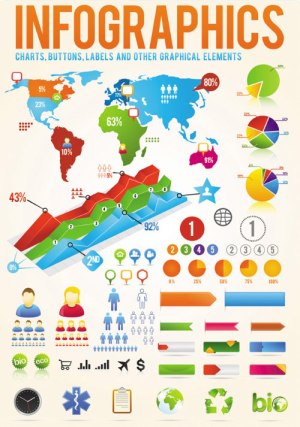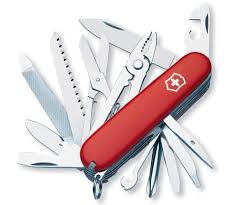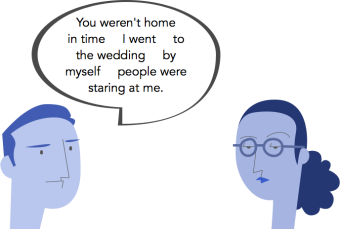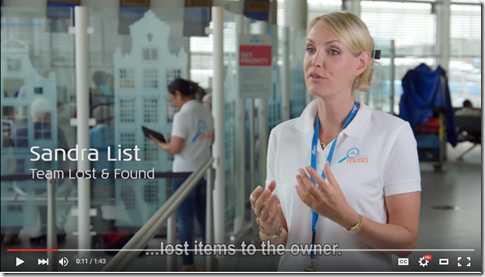We’ve all heard it: today’s average attention span is shorter than ever before. All the content marketing “gurus” shout it from their mountaintops. If you read content marketing blogs or attend digital conferences, it’s a mantra that carries over into every session: “Shorter is better.” And we believe it unquestioningly.
But should we believe it?

One stat often cited is that the average American’s attention span is 8 seconds, while a goldfish’s is 9 seconds.
Pretty insulting, right? It’s also not true.
Many content marketers base their attention span claims on surveys where the methodology is flawed and the premise is completely wrong.
The data cited is almost always based on average view time for videos from YouTube, Vimeo, and other video databases watched on our phones, with very little data collected about viewing habits on other media such as tablets or bigger screens like computer monitors or TVs. The data are skewed because these are the smallest portable screens we ever spend any substantial time viewing and the assumption (we know what happens when we assume) is that social media content is always viewed on a phone.
It is true that most of our phone viewing happens between events, when we only have a minute or two to read, watch, or text before the next “real world” event, such as a meeting or appointment. We even watch short videos or check social instead of watching TV commercials.
 We are on our phones constantly, checking them upwards of 80 times and scrolling an average of 300 feet per day.
We are on our phones constantly, checking them upwards of 80 times and scrolling an average of 300 feet per day.
So videos tailored for mobile use have to be short, not because our attention spans are short, but because we’re consuming videos on the run. The message needs to be quick and pithy.
However, think about what we watch in our downtime. We still view hour-long TV shows and long-form content such as Netflix or Amazon Prime. Sometimes we binge watch for hours on a rainy weekend.
If our attention spans are so short, why do we still watch two-hour movies? It’s not because we can’t pay attention.
It’s Our Viewing Habits
Are we creating shorter videos because our attention span is really getting shorter? Or is our supposedly shortening attention span being misdiagnosed because anecdotal observation told us that viewers will only watch short videos, with very little – if any – basis in real research?
I contend it is the latter. Sort of.

It’s no surprise that the amount of video consumed in general has increased over the last few years — from mobile to television. Netflix, Amazon Prime, Hulu, and other streaming services have pulled viewers away from broadcast TV, offering more control over what we watch and when, changing consumers’ habits.
Add in the ol’ standbys like YouTube, Facebook, etc., and it’s a wonder anyone even advertises on broadcast TV anymore. But that’s beside the point.
The point is that content on each of these platforms varies in length, yet we all watch them all the time.
Two key factors play into how long we’ll watch.
1. Screen Size
Think about your own viewing habits. While you likely won’t watch a movie on your phone (unless you’re stuck on a long flight with no other choice), you will watch a two-minute movie trailer on the tiny screen. You don’t want to sit there and hold the phone and drain the battery for two hours. But two minutes? No problem.
As the screen gets bigger, our attention span gets longer. Ever caught yourself binge-watching on your tablet or laptop? You’re not alone. Hour-long installments are no big deal to watch on a slightly larger screen, one about the size of the previous generation of modest televisions.
We still go to the movies, where we pay exorbitant prices to sit and watch two-hour full feature films. Why? Because it’s entertaining and it’s on a huge screen. (Plus, there’s popcorn.)
Clearly, our attention span has not shrunk. Only our devices have.
2. How Engaging It Is
Some of my favorite content is product reviews. Yep, I’m a nerd, but I also run the influencer program at my company, so I pay attention to how reviews are made and how engaging they are. Some of the best ones last anywhere from 8 to 30 minutes. Why such a broad range? Because they’re well done and their length is determined by their content, not an artificial stopwatch.
Engaging videos get views no matter how long they are, 30 seconds to 30 minutes and beyond.
Have you ever walked out of a movie theater because the film was downright awful? I have. Only once, but I did. How about turned off the TV or clicked away from a YouTube video because it was boring and you had better things to do with your time? It happens all the time. Why?
It’s not the length of a video that matters but its content. Don’t get caught up foolishly sacrificing really good content for the sake of an arbitrary time. If it’s worth seeing, leave it in. People will watch great content no matter the length.

 Content marketing is all about communication: getting our message across to followers and customers. But how do we do that effectively? Ah, the age old question, right?
Content marketing is all about communication: getting our message across to followers and customers. But how do we do that effectively? Ah, the age old question, right? Contrary to popular belief, however,
Contrary to popular belief, however,  Fair warning: I am NOT a graphic designer.
Fair warning: I am NOT a graphic designer.  Attractive
Attractive Useful
Useful KISS, right? (Not the rock band.) Nobody wants to struggle to understand your message. Truth is, they won’t. Once they meet resistance, they’ll quit. There are too many other distractions and options competing for their attention and too many other places to find the same information. The point of your blog or content is to not only provide useful information but also to become the new go-to source so readers will come back and share your knowledge with their friends. There are a thousand ways to communicate the same idea, but there are a million ways to communicate it poorly. Just like PowerPoint slides done right, infographics should be clean and simple, with minimal text for maximum impact. Too much text bogs down the message. Plus, people won’t read it anyway, so what’s the point?
KISS, right? (Not the rock band.) Nobody wants to struggle to understand your message. Truth is, they won’t. Once they meet resistance, they’ll quit. There are too many other distractions and options competing for their attention and too many other places to find the same information. The point of your blog or content is to not only provide useful information but also to become the new go-to source so readers will come back and share your knowledge with their friends. There are a thousand ways to communicate the same idea, but there are a million ways to communicate it poorly. Just like PowerPoint slides done right, infographics should be clean and simple, with minimal text for maximum impact. Too much text bogs down the message. Plus, people won’t read it anyway, so what’s the point? Like it or not, your very serious, business-focused content is competing with the entertainment world. How many times have you been reading an article or blog post and gotten distracted by a Facebook status update or Tweet? You hop over there to catch up on the latest, make a few comments, share, retweet, post, laugh, and next thing you know it’s half an hour later and you might or might not get back to the original article today. It happens to everyone. (I checked Facebook twice while writing this paragraph.) Your content needs to be engaging and fun enough to grab your reader’s attention and keep it. Or at least make them want to come back and finish.
Like it or not, your very serious, business-focused content is competing with the entertainment world. How many times have you been reading an article or blog post and gotten distracted by a Facebook status update or Tweet? You hop over there to catch up on the latest, make a few comments, share, retweet, post, laugh, and next thing you know it’s half an hour later and you might or might not get back to the original article today. It happens to everyone. (I checked Facebook twice while writing this paragraph.) Your content needs to be engaging and fun enough to grab your reader’s attention and keep it. Or at least make them want to come back and finish. So as a public service, let me explain a run-on sentence. A run-on has absolutely nothing to do with how long it is. You can write very short run-on sentences. And you can write really long sentences — ones that take up an entire paragraph and drag on and on, seemingly forever, until you’re not even sure what they say anymore — that aren’t run-ons.
So as a public service, let me explain a run-on sentence. A run-on has absolutely nothing to do with how long it is. You can write very short run-on sentences. And you can write really long sentences — ones that take up an entire paragraph and drag on and on, seemingly forever, until you’re not even sure what they say anymore — that aren’t run-ons.




